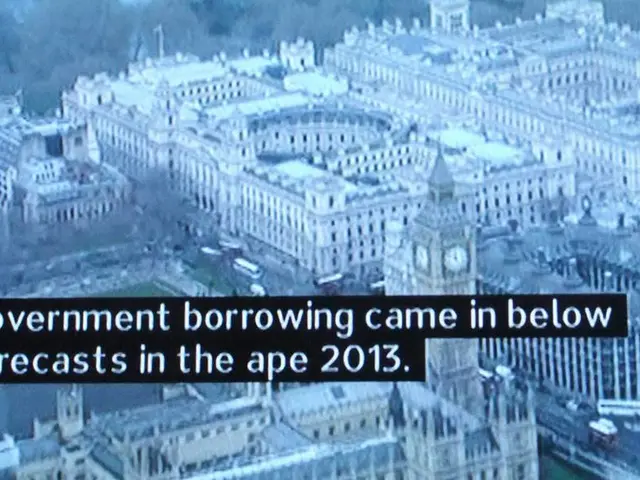Historic surge in global military expenditure to an unprecedented $2.7 trillion in 2024, marking the most significant increase since the Cold War era.
In 2024, the world witnessed a substantial escalation in military spending, reaching an impressive $2.7 trillion, marking a 9.4% surge since the previous year and the steepest rise since the Cold War's conclusion[1][2]. This trend marks the tenth consecutive year of increased military spending worldwide, primarily spurred by tensions simmering in Europe and the Middle East[1][2].
Notable Increases by Region
- Europe: Several European nations experienced significant jumps in their military outlays, with rise rates unmatched in recent history. Countries like Germany and Russia emerged as major spenders, with Germany overtaking India to become the fourth-highest spender globally[3].
- Middle East: Escalating conflicts, such as the Gaza offensive, contributed to robust military expenses in the region. The Middle East's military expenditure skyrocketed to an estimated $243 billion, a 15% increase on its 2023 figure[2][3].
The Social and Political Ramifications
The mounting emphasis on military spending comes with a host of socio-economic and political ramifications:
- Economic Consequences: Allocating a larger share of government funds to military expenses often means diverting resources from other sectors, such as healthcare, education, and social welfare. This diversion could lead to long-term economic and societal repercussions[1][5].
- Political Tensions: Intensified military spending can exacerbate geopolitical tensions, fostering a cycle of escalation that may destabilize international relations further[2][3].
- Global Stability: The continual rise in global military spending signals a shift towards prioritizing military security over other aspects of national development. This shift may impact global stability, potentially fomenting both conflict deterrence and escalation[1][4].
Budgetary Decisions and Trade-Offs
Deciding to increase military expenditure entails substantial budgetary trade-offs:
- GDP Military Burden: In 2024, global military spending as a percentage of GDP increased to 2.5%, with nations like Ukraine allocating a considerable chunk of their GDP to defense (34% in Ukraine's case)[2][3]. This demonstrates a prioritization of defense over other public expenditures.
- Opportunity Costs: Channeling resources into military spending can result in costs missed in sectors such as education, employment, and economic development, potentially leading to long-term societal obstacles[1][5].
In conclusion, the surge in global military spending in 2024, particularly in Europe and the Middle East, underscores a global trend towards prioritizing military security. This trend brings about significant socio-economic and political implications, including potential instability and budgetary trade-offs.
[1] https://sipri.org/media/press-release/2025/global-military-spending-reaches-record-27-trillion-2024[2] https://www.reuters.com/business/retail-consumer/global-military-spending-heads-record-27-trillion- amid-escalating-conflicts-2024-06-14/[3] https://www.washingtonpost.com/world/europe/2024/10/19/european-nations-increase-military-spending-germany-gains-ground/[4] https://www.bbc.com/news/world-59586912[5] https://www.epi.org/publication/military-spending-and-the-economy/
- The highest military spending in 2024 reached $2.7 trillion, a record high and the steepest surge since the Cold War's end, with NATO nations contributing significantly to this expenditure.
- Liang, a prominent finance analyst, expressed concerns about the aerospace industry's future, given the highest military spending in recent years and its potential impact on other sectors like healthcare and education.
- The escalating war-and-conflicts in Europe and the Middle East have led to a 9.4% increase in military spending in 2024, with Germany and Russia among the countries recording the most significant jumps.
- In the wake of increased military spending in 2024, politics has played a major role in funding decisions, with nations like Ukraine dedicating 34% of their GDP to defense, representing a significant amount of their overall budget.
- The continual rise in military spending may have long-term consequences for global stability, as it could contribute to both conflict deterrence and escalation, which may negatively impact general news and international relations.
- There are opportunity costs associated with increased military spending, as resources diverted towards the military sector could have been used for economic development, employment, and education, potentially creating long-term societal challenges.









